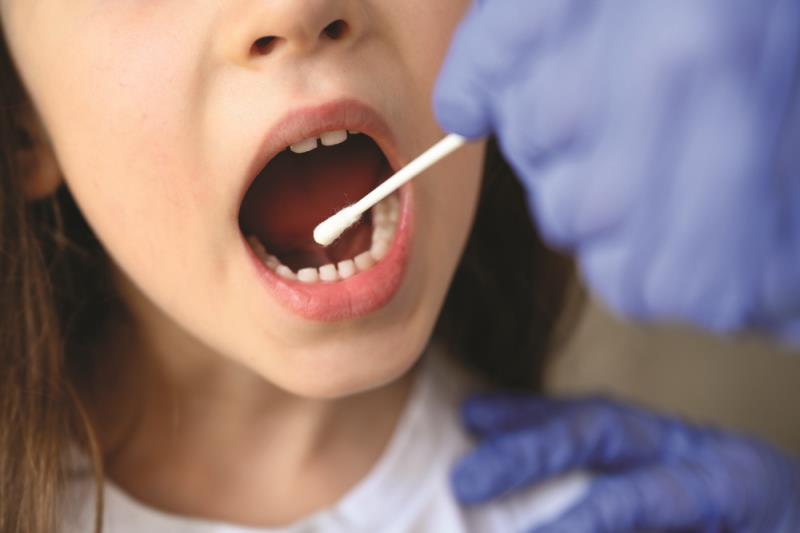Oral microbiota may identify autism in kids with >80 percent accuracy





Eleven oral bacterial species may serve as biomarkers for early detection of autism through simple oral sampling, with an accuracy of 81 percent, according to a cross-disciplinary research team from the Faculty of Dentistry and the Department of Psychology of the University of Hong Kong (HKU).
Eleven oral biomarkers for early ASD detection
Autism spectrum disorder (ASD) affects one in 621 children in Hong Kong. [Front Psychiatry 2023;14:1088209] To identify potential biomarkers for early ASD detection, the researchers collected dental plaque samples from 25 children with ASD (median age, 4.79 years; male, 76.0 percent) and 30 age- and sex-matched typically developing children (controls; median age, 4.9 years; male, 80 percent). Data were analyzed using 16S rRNA sequencing. [J Dent 2025;doi:10.1016/j.jdent.2024.105486]
Results showed distinct microbial compositions in the two groups, with children with ASD exhibiting lower bacterial diversity vs controls (Wilcoxon rank sum test, p=0.035). “Notably, 11 species could be used to discriminate ASD and control groups, which are referred to as discriminatory or bacterial species,” reported the researchers.
Children with ASD could be identified using six discriminatory species: Microbacterium flavescens, Leptotrichia sp. HMT-212, Prevotella jejuni, Capnocytophaga leadbetteri, Leptotrichia sp. HMT-392, and Porphyromonas sp. HMT-278.
Analogously, typically developing children could be identified using five discriminatory species: Fusobacterium nucleatum subsp. polymorphum, Schaalia sp. HMT-180, Leptotrichia sp. HMT-498, Actinomyces gerencseriae, and Campylobacter concisus.
>80 percent accuracy
The overall community composition and 11 specific bacterial species demonstrated high accuracy in differentiating between children with and without ASD. A model generated by random forest and leave-one-out cross-validation (LOOCV) achieved an accuracy of 0.813 (95 percent confidence interval [CI], 0.54–0.96).
Receiver operating characteristic analysis yielded a sensitivity of 0.778, a specificity of 0.857, and an area under the curve (AUC) of 0.937 (95 percent CI, 0.82–1.00) for differentiating children with and without ASD.
“Early identification of and timely support for children with ASD are crucial for significantly enhancing the chances of independent living and improved social functioning,” wrote the researchers. “Current screening methods rely heavily on subjective observations by teachers and caregivers, underscoring the necessity for more robust objective measures.”
“This innovation paves the way for a simple, noninvasive screening tool that could be integrated into routine dental check-ups for children, enabling early referral for professional evaluation,” highlighted the researchers.
Microbiome-brain connection
With >700 known bacterial species, the oral microbiota represents the second most complex microbial community in humans. Prior research suggests that the oral microbiome plays important roles in the pathogenesis of inflammation, immune dysfunction, and disruption of the gut-brain axis, which may contribute to ASD pathophysiology. [Microorganisms 2024;12:1797; Am J Med Genet B Neuropsychiatr Genet 2017;174:651-660; Biol Psychiatry 2018;83:214-223; Nat Rev Neurosci 2012;13:701-712; Gut 2022;71:910-918]
“[Our] findings contribute to understanding the microbiome-brain connection in ASD and its implications for early detection and management,” commented the researchers. Further research is needed to validate these oral bacterial biomarkers and explore their mechanistic association with ASD pathophysiology. [J Dent 2025;doi:10.1016/j.jdent.2024.105486]